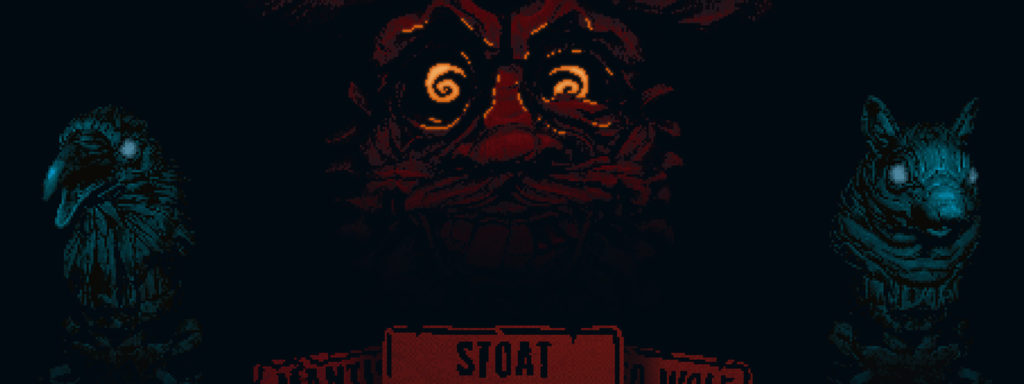Gaming’s psychological horror genre tends to be the most successful when it hits the player with a sucker punch. While a decent psychological horror game may present itself with some fairly straightforward twists, the pinnacle of the genre hits you when it’s least expected. The Eternal Darknesses, the Doki Doki Literature Clubs – these games find unique ways to break the mold on both the game and the reality the player is engaging in in these games, and it makes for incredible meta moments that truly fuck with the mind in new twisted ways. Dan Mullins’ Inscryption has all the ambition to hit those same notes and reach that masterpiece level of psychological horror, and despite some bumps in its execution, Mullins has created something that stands amongst the best of the genre, while also creating an entirely new subgenre that will be studied and mimicked for years to come.
Inscryption begins with the player unable to start a new game from the game menu; instead, they’re automatically forced to continue whatever last save was on the disc. From here the player finds themselves stranded in a dark cabin with a pair of eerie eyes staring across a wooden table, alluring the player to partake in a card game. And the (video) game only gets weirder from there.
While the player learns and grows their skill level in the gruesome but rewarding card game, oddities like talking cards and unnatural glitches start to manifest the further the player gets towards defeating the owner of that eerie pair of eyes. The game extends past the cabin to one other location, and an entire secondary digital world, but as the player works their way through the “in game” game, they are fed small clips of Luke Carder, a trading card vlogger who they learn originally discovered the actual Inscryption game cartridge they’re playing. Along with the in game cartridge’s story, the actual game of Inscryption feeds the player tidbits regarding the cat and mouse situation Luke’s playing with the game’s creators, and potentially his own sanity.
Exploring psychological horror through a rogue deck builder works largely in part because the card game itself is fantastic. With mechanics requiring the player to sacrifice weaker cards, defend against monstrous enemy beast cards, and with losses to your eerie-eyed foe meaning life and death, Inscryption flawlessly invokes a sense of curious dread. Matches can turn in an instant and it’s up to the player to think two to three steps ahead for major moves, but simultaneously develop a way to salvage a game in a split second if a surprise boss attack comes up.
The game consists of three acts; the second completely resets many of the rules of the first, adding three new types of cards and forcing the player to build and test new solutions, which at first I found frustrating. But as I learned new rules and combos, I felt proud at how I adapted to figure out how to min max a deck.
The third act returns to more similar gameplay to the first, but it introduced enough new mechanics to keep things interesting, without undergoing the obnoxious full mechanic sets found in the second act. That being said, the third act dragged significantly more than either of the previous chapters. There were great boss fights, but less exciting normal card combat encounters, and an environment I found considerably less spooky and engaging.
These later stages did however introduce new characters and a lot more clues to the mysteries Luke was exploring on the disc. Finding the personalities, quirks, dreams, fears, and tactics of the four scrybes was satisfying, but what fell a bit short was how their stories tied into the overarching corporate corruption plot, which, while telegraphed and interesting, felt more cliché than what was happening specifically in the in game version of Inscryption.
Inscryption deserves ample praise for its ambition alone. Blending razor tight deck building mechanics with interesting characters and a fourth wall break inside a fourth wall break, this type of new and experimental storytelling is bound to have a few hiccups. But much like the game’s own characters, looking past the game’s blemishes and sinking your teeth into Inscryption gives much more rewarding and sinister experiences that are worth discovering despite the minor mistakes.



